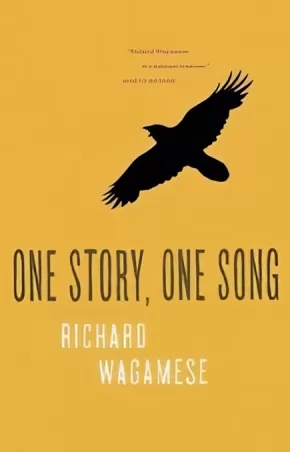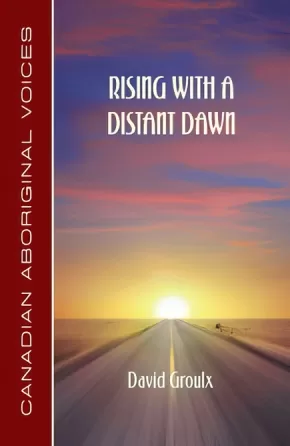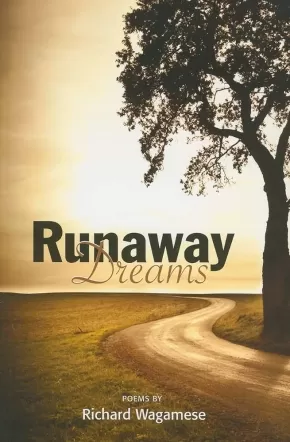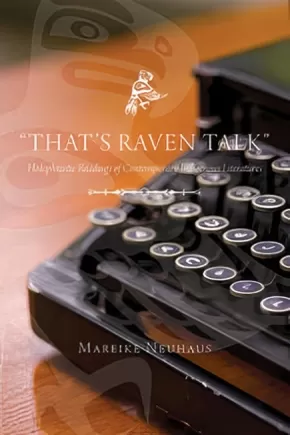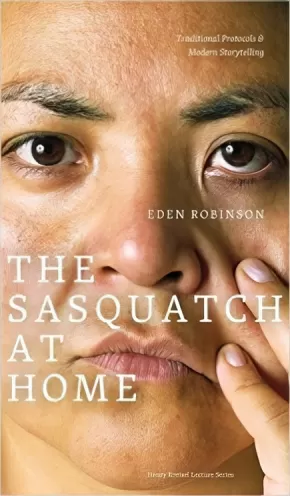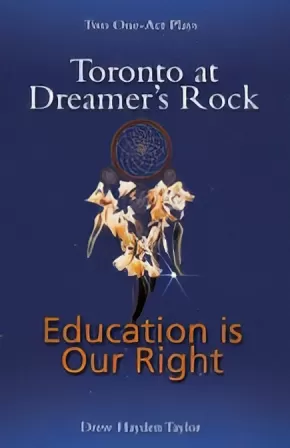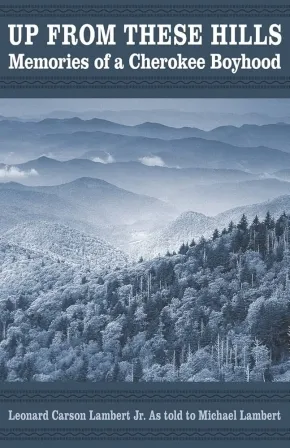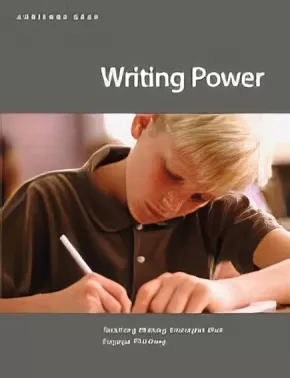Browse Books for Adults
Synopsis:
A collection of warm, wise and inspiring stories from the author of the bestselling One Native Life.
Since its publication in 2008, readers and reviewers have embraced Richard Wagamese's One Native Life. In quiet tones and luminous language,wrote the Winnipeg Free Press, Wagamese shares his hurts and joys, inviting readers to find the ways in which they are joined to him and to consider how they might be joined to others.
In this book, Richard Wagamese again invites readers to accompany him on his travels. This time, his focus is on stories: how they shape us, how they empower us, how they change our lives. Ancient and contemporary, cultural and spiritual, funny and sad, the tales are grouped according to the four Ojibway storytelling principles: balance, harmony, knowledge and intuition.
Whether the topic is learning from his grade five teacher about Martin Luther King, gleaning understanding from a wolf track, lighting a fire for the first time without matches or finding the universe in an eagle feather, these stories exhibit the warmth, wisdom and generosity that made One Native Life so popular. As always, in these pages, the land serves as Wagamese' guide. And as always, he finds that true home means not only community but conversation good, straight-hearted talk about important things. We all need to tell our stories, he says. Every voice matters.
Reviews
"One Story, One Song is a collection of short stories that show how stories shape & empower us, and change our lives. The stories are grouped according to the 4 essential principles of the Ojibway traditional teachings: humility, trust, introspection, and wisdom." - The Dalai Lama Center
Additional Information
216 pages | 5.52" x 8.50" | Paperback
Synopsis:
Red Rooms is a unique journey articulating the lives of the Native patrons of an urban hotel as seen through the eyes of the hotels cleaning lady. The characters face the crises in their lives in ways that are easily identifiable and not uncommon to Native people. What is unique about this collection of stories is Dimaline's sometimes cryptic, sometimes comedic, always compassionate and visionary housekeeper who offers hindsight, insight and foresight to the reader in the representation of their lives."Haunting and complex Red Rooms is the Native Rosetta Stone. A lovely tour de force from an up-and-coming writer to watch."Eden Robinson
Synopsis:
Rising with a Distant Dawn is a powerful and moving poetry collection, which stretches across the boundaries of skin colour, language, and religion to give voice to the lives and experiences of ordinary Aboriginal Canadians. The poems embrace anguish, pride, and hope. They come from the woodlands and the plains, they speak of love, of war, and of the known and the mysterious, they strike with wisdom, joy, and sadness, bringing us closer than ever before to the heart of urban Aboriginal life. The book captures timely personal and cultural challenges, and ultimately shares subtle insight and compassion.
Educator & Series Information
This book is part of the Canadian Aboriginal Voices series.
Additional Information
|
Synopsis:
Having developed a large reputation for his many novels and nonfiction works, Richard Wagamese now appears before us as a poet, with a collection of stunning poems ranging over a broad landscape. He begins with an immersion in the immemorial landscape where “the ancient ones stand at your shoulder . . . making you a circle / containing everything.” These are Medicine teachings told from the experience of one who lived and still lives them. He describes his life on the road when he repeatedly ran away at an early age, and the beatings he received when the authorities tried “to beat the Indian right out of me.” Yet even in the most desperate situations, Wagamese shows us Canada as seen through the eyes and soul of a well-worn traveller, with his love of country, his love of people. Through it all, there are poems of love and music, the language sensuous and tender.
Additional Information
100 pages | 9.00" x 6.00"
Synopsis:
“That’s Raven Talk”: Holophrastic Readings of Contemporary Indigenous Literatures is the first comprehensive study of North American Indigenous languages as the basis of textualized orality in Indigenous literatures in English. Drawing on a significant Indigenous language structure—the holophrase (one-word sentence)— Neuhaus proposes “holophrastic reading” as a culturally specific reading strategy for orality in Indigenous writing. In readings of works by Ishmael Alunik (Inuvialuit), Alootook Ipellie (Inuit), Richard Van Camp (Dogrib), Thomas King (Cherokee), and Louise Bernice Halfe (Cree), she demonstrates that (para)holophrases—the various transformations of holophrases into English-language discourse—textualize orality in Indigenous literatures by grounding it in Indigenous linguistic traditions. Neuhaus’s discussion points to the paraholophrase, the functional equivalent of the holophrase, as a central discourse device in Indigenous writing and as a figure of speech in its own right. Building on interdisciplinary research, this groundbreaking study not only links oral strategies in Indigenous writing to Indigenous rhetorical sovereignty, but also points to ancestral language influences and Indigenous rhetoric more generally as areas for future research.
Additional Information
336 pages | 6.00" x 9.00"| Paperback
Synopsis:
In March 2010 the Canadian Literature Centre hosted award-winning novelist and storyteller Eden Robinson at the 4th annual Henry Kreisel Lecture. Robinson shared an intimate look into the intricacies of family, culture, and place through her talk, "The Sasquatch at Home." Robinson's disarming honesty and wry irony shine through her depictions of her and her mother's trip to Graceland, the potlatch where she and her sister received their Indian names, how her parents first met in Bella Bella (Waglisla, British Columbia) and a wilderness outing where she and her father try to get a look at b'gwus, the Sasquatch. Readers of memoir, Canadian literature, Aboriginal history and culture, and fans of Robinson's delightful, poignant, sometimes quirky tales will love The Sasquatch at Home.
Reviews
"[Eden Robinson's] lecture reprises the Sasquatch theme from her novel, Monkey Beach. It is less a lecture than an extended poem – a love song to a place and people, a celebration of survival of places, names, and humans.... The work is filled with alternate narratives. Just when we are eagerly following a line of story or thought, out come Trickster-ish turns and teases.... Robinson seductively draws outsiders in, then sharply clarifies the limits of the welcome.... Eden Robinson brings her own literary ethics to the discussion [of the limits of cross-cultural sharing]. Her consciousness and conscientiousness permeate her fiction as well as the Sasquatch lecture. It is fitting that Paula Simons calls her 'one of Canada’s most provocative and talented writers' and also 'a moral and cultural force'." -Valerie Alia, Cantext, February 2012
Additional Information
64 pages | 14.00" x 23.00"
Synopsis:
In these two one-act plays, Drew Taylor delves into the past and speculates about the future as he examines the dilemmas facing young Native Canadians today.
Toronto at Dreamer's Rock is a moving portrayal of a teenage boy who is torn between the traditions of his people, which he only vaguely understands, and the lure of modern life. His magical encounters with two members of his tribe - one from 400 years in the past and one from the future - make him aware of how little he has thought about what it means to be an Indian.
Education is Our Right borrows from the familiar story of Charles Dickens' A Christmas Carol, but in this version the spirits of Education Past, Present and Future attempt to show the Minister of Indian Affairs the error of his ways.
Drew Taylor combines humour, passion, spirituality, and tough realism to create a hopeful vision of the future that will appeal especially to young adult readers. Both plays have toured extensively to schools in Ontario and Quebec.
An Ojibway from the Curve Lake First Nations in Ontario, Drew Hayden Taylor has worn many hats in his literary career, from performing stand-up comedy at the Kennedy Center to being Artistic Director of Canada’s premiere Native theatre company, Native Earth Performing Arts.
He has been an award-winning playwright, a journalist/columnist, short-story writer, novelist, television scriptwriter, and has worked on over 17 documentaries exploring the Native experience.
Synopsis:
David Groulx’s Under God’s Pale Bones traces back 500 years through the drumbeat, through a history of genocide. Groulx's poems rumble through night skies, speaking of ink and blood as they split the darkness, calling on spiritual strength and ancestral medicine.
“This is a reunion, ready to drink like a good Calvados from Northern France aged until the vintage is ready to be unveiled, shared. These poems are the impressions my world has left on me. The world beneath God’s pale bones.” —David A. Groulx
Synopsis:
In 2008 the Canadian government apologized to the victims of the notorious Indian residential school system, and established a Truth and Reconciliation Commission whose goal was to mend the deep rifts between Aboriginal peoples and the settler society that engineered the system. In Unsettling the Settler Within, Paulette Regan, a former residential-schools-claims manager, argues that in order to truly participate in the transformative possibilities of reconciliation, non-Aboriginal Canadians must undergo their own process of decolonization. They must relinquish the persistent myth of themselves as peacemakers and acknowledge the destructive legacy of a society that has stubbornly ignored and devalued Indigenous experience. With former students offering their stories as part of the truth and reconciliation processes, Regan advocates for an ethos that learns from the past, making space for an Indigenous historical counter-narrative to avoid perpetuating a colonial relationship between Aboriginal and settler peoples. A powerful and compassionate call to action, Unsettling the Settler Within inspires with its thoughtful and personal account of Regan's own journey, and offers all Canadians -- Indigenous and non-Indigenous policymakers, politicians, teachers, and students -- a new way of approaching the critical task of healing the wounds left by the residential school system.
Synopsis:
Born into a storied but impoverished family on the reservation of the Eastern Band of Cherokee Indians, Leonard Carson Lambert Jr.’s candid memoir is a remarkable story and an equally remarkable flouting of the stereotypes that so many tales of American Indian life have engendered.
Up from These Hills provides a grounded, yet poignant, description of what it was like to grow up during the 1930s and 1940s in the mountains of western North Carolina and on a sharecropper’s farm in eastern Tennessee. Lambert straightforwardly describes his independent, hardworking, and stubborn parents; his colorful extended family; his eighth-grade teacher, who recognized his potential and first planted the idea that he might attend college; as well as siblings, schoolmates, and others who shaped his life. He paints a vivid picture of life on the reservation and off, documenting work, family life, education, religion, and more. Up from These Hills also tells the true story of how this family rose from depression-era poverty, a story rarely told about Indian families. With its utterly unique voice, this vivid memoir evokes an unknown yet important part of the American experience, even as it reveals the realities behind Indian experience and rural poverty in the first half of the twentieth century.
Synopsis:
Dr. Herman Michell has produced a practical, easy to follow, reader designed to provide both examples and suggestions so as to allow readers the ability to establish “a starting base from which they can develop their own ways of working with Elders…” (p. ii).
By exploring key Indigenous concepts, [i.e., definitions of Indigenous identity in Canada, Indigenous People and Indigenous knowledge; Indigenous worldview; who are Indigenous elders; etc.], Dr. Michell hopes to build cross-cultural bridges.
This book is a must read for anyone wishing to quickly obtain an understanding of what underlies Indigenous ways of perceiving.
Additional Information
Pages: 112 | Size: 6″ x 9
Synopsis:
Teaching writing strategies that engage thinking
This practical and thoughtful resource is a follow up to the ground-breaking Reading Power books, which feature simple strategies for helping students focus on their "thinking" while they read. Teachers already familiar with these books will find this a simple way to link reading and writing instruction. Using the same five thinking strategies -- Connect, Question, Visualize, Infer, and Transform -- young writers will learn how to engage their readers' thinking through their writing.
Writing Power will guide teachers through a series of lessons focusing on each of the strategies. A wide range of effective writing techniques are outlined and reinforced throughout the book, with suggested "anchor books" for each lesson. The fundamentals of the writing process and the "6 Traits" are integrated into this unique examination of how developing an awareness of the readers' thinking can influence and affect a student's ability to write.
Coming in October 2011!
Synopsis:
Ideas, exercises, and encouragement for teachers and writers of all ages
Award-winning author Carolyn Coman beliees that the essence of good writing, no matter the genre, is the ability to craft a solid story. In this innovative book, Carolyn provides advice, strategies and inspiration focusing on the key elements of stories: character development, plot, voice and dialogue, point of view, and place and time. Full of tips, exercises, and encouragement, this straightforward guide will help make the writing process less intimidating for students and teachers alike.
Synopsis:
Depuis 5 ans, à chaque automne, la famille Miktouch se rassemble devant la clôture d’une compagnie forestière aux abords de la route 230. Elle y revendique pacifiquement un territoire ancestral en son nom et en celui de sa nation, les Malamek. La famille Miktouch, c’est d’abord Matthew le père, chef de la nation Malamek, sa femme Hélène, une Québécoise convertie aux pratiques rituelles amérindiennes, leurs fils Marc, dans la vingtaine, qui travaille au dépanneur de la réserve et David, jeune avocat exilé à Ottawa pour défendre la cause.
J’vais commencer par protéger chacun des arbres. La rivière qui coule de l’autre côté de cette clôture-là, la Wulustek, ben moi, je veux que mes enfants puissent venir se baigner pis boire dans cette eau-là, c’est sacré. Ça, c’est notre survie. C’est ça qui va nous donner la dignité. Y faut jamais perdre ça. C’est toi-même qui me disais ça, m’man. Qu’y fallait toujours prouver qui on était, pis encore aujourd’hui, tu m’le répètes.Un jour, tout ça va servir à quelque chose. Les pancartes, le drapeau, le territoire. Pis une fois qu’on va l’avoir, le territoire, je vais mettre des wigwams tout le long de la rivière, et faire un campement, comme dans le temps de grand-p’pa, pour faire revivre la Nation malamèque.
Additional Information
Genre: Drama.
Synopsis:
The history of the colonization of the Americas by Europeans is often portrayed as a mutually beneficial process, in which ”civilization” was brought to the Natives, who in return shared their land and cultures. A more critical history might present it as a genocide in which Indigenous peoples were helpless victims, overwhelmed by European military power. In reality, neither of these views is correct. This book is more than a history of European colonization of the Americas. In this slim volume, Gord Hill chronicles the resistance by Indigenous peoples, which limited and shaped the forms and extent of colonialism. This history encompasses North and South America, the development of nation-states and the resurgence of Indigenous resistance in the post-WW2 era.
Additional Information
72 pages | 8.50" x 5.50"

